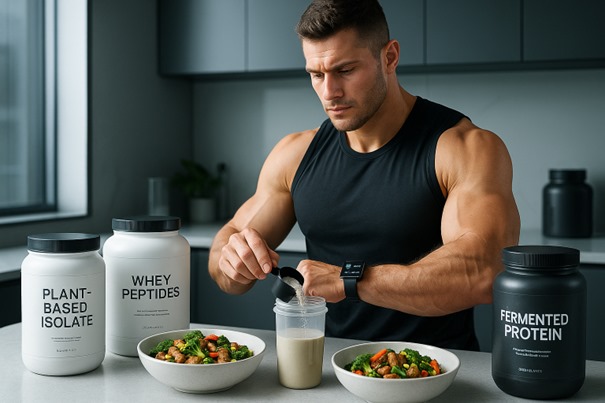For decades, protein has been the undisputed king of bodybuilding nutrition. But in 2025, a silent shift is taking place — one that redefines not only how much protein athletes consume, but what kind, when, and why. As scientific advances reshape our understanding of muscle synthesis and recovery, bodybuilders are trading old-school bro science for precision-based protein strategies.
From lab-grown peptides to fermented vegan isolates, protein is evolving from a simple macronutrient to a customizable performance tool.
Beyond the Scoop: Rethinking Quantity vs. Quality
The golden rule of "1 gram of protein per pound of body weight" still circulates widely — but emerging research is challenging its relevance.
A recent meta-analysis by the International Society of Sports Nutrition (2024) concluded that optimal muscle hypertrophy may occur at just 1.6 g/kg of body weight, provided the protein is high in leucine and evenly spaced across meals.
"This isn't about eating more — it's about absorbing better," explains Dr. Lars Kluge, a performance nutrition researcher in Hamburg. "Bioavailability and amino acid profile matter more than raw quantity."
The Rise of Precision Protein
Newer sources of protein are entering the bodybuilding mainstream:
- Mycoprotein (derived from fungi) offers a full amino acid profile with low environmental impact.
- Whey hydrolysate peptides absorb faster than traditional whey, triggering quicker anabolic responses post-workout.
- Fermented rice and pea blends now rival animal protein in muscle-building studies — particularly when enriched with BCAAs.
In elite circles, athletes are turning to personalized nutrition protocols where daily protein intake is adjusted in real-time via wearables and recovery metrics.
Timing Is Everything: The Return of the Anabolic Window
Though once considered a myth, the so-called "anabolic window" is making a data-driven comeback — but not in the way many remember it.
Rather than rushing to drink a shake 20 minutes after a workout, modern athletes are focused on amino acid timing throughout the entire day, especially around sleep cycles and high-stress periods.
"Protein timing isn't just about post-workout anymore," says Carla Jensen, coach at a Scandinavian strength training institute. "We're seeing huge benefits from nighttime casein and pre-session EAAs."
Protein Ethics and Sustainability
An interesting byproduct of this evolution is a growing awareness of ethics and sustainability in protein sourcing. Plant-based athletes are no longer at a disadvantage — and some even report better recovery and inflammation control with non-animal sources.
The bodybuilding industry, long criticized for its meat-heavy culture, is now seeing a wave of eco-conscious lifters and protein startups that prioritize low-emission, cruelty-free alternatives.
Conclusion: Not Just a Macronutrient, but a Tool
In the modern world of bodybuilding, protein is no longer seen as a brute-force building block. It is a precise tool, selected for its metabolic compatibility, sourced for sustainability, and applied with scientific accuracy.
As performance becomes increasingly personalized and informed by data, the way athletes use protein may soon be as important as the way they train.
The future of muscle isn't just stronger — it's smarter.


